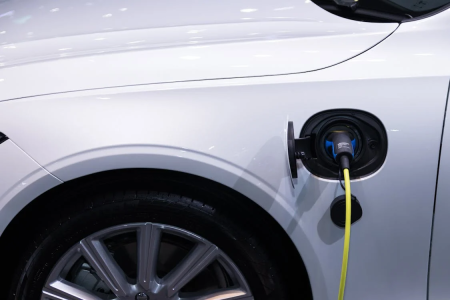You paid fuel tax for decades—here’s what they’re taxing next
By
Maan
- Replies 0
Electric vehicles have become more common on Aussie roads—but now, there's fresh debate over how those drivers should contribute to maintaining our transport network.
A new proposal from the federal government has reignited long-standing questions about fairness, funding, and the future of road use.
What’s emerging is a complex policy challenge with major implications for drivers nationwide.
Electric vehicle (EV) drivers across Australia could soon face a new road-user charge, with Treasurer Jim Chalmers confirming the federal government was working alongside the states and territories to reform how the nation funds its road network.
While the idea of road-user charging wasn’t new, it gained fresh momentum after Dr Chalmers raised it again during a national press club speech.
‘We will also continue to work with states and territories on the future of road-user charging,’ he said.
He continued: ‘All of this represents a big agenda on the supply side of our economy. None of these reforms are simple.’
Behind the renewed interest is a looming budget challenge—traditional fuel excise, which currently raises billions for federal coffers, is shrinking.
Australians paid an estimated $15.71 billion in net fuel excise in 2023–24. Over the next four years, that figure was forecast to drop by $470 million, totalling $67.6 billion by 2026–27.
Fuel excise—currently set at 50.8 cents per litre—is only paid by petrol and diesel vehicle owners. Households with conventional petrol cars typically paid more than $1200 annually in this tax alone.
However, pure electric vehicles bypassed this entirely. No fuel, no excise.
That gap in revenue had policymakers scrambling for alternatives as EV adoption continued to grow and fuel-efficient models became the norm.
The Australian Automobile Association (AAA) weighed in, urging for a nationally consistent framework for charging all road users. It supported a distance-based road-user system but insisted that revenue must go directly toward road upgrades.
New South Wales was currently the only state with a formal plan. A road-user charge would kick in by 2027—or earlier if EVs made up 30 per cent of new vehicle sales before then.
Plug-in hybrids would be charged at a fixed 80 per cent of the full rate, recognising their partial use of fuel.
Western Australia had also flagged intentions to implement a similar charge.
Victoria, on the other hand, attempted to get in early—only to have its plans dismantled. The state introduced a road-user levy on electric cars, only for the High Court to strike it down after two local EV owners challenged its legality.
Their argument? That it constituted an excise, something only the federal government had the authority to impose. The High Court agreed.
South Australia faced its own setbacks. The former Liberal government had planned to introduce a two-part EV charge—one fixed, the other based on distance. But backlash led to delays, and the legislation was ultimately repealed.
Amid the legal tangles and state-level misfires, experts continued to propose what they considered the ‘gold standard’ for reform—a dynamic pricing model that considered not just distance, but also vehicle mass, location and time of travel.
Yet for the Commonwealth, such an approach posed constitutional challenges. It couldn’t impose taxes that discriminated between states or parts of states—leaving much of the reform work to state governments.
Dr Chalmers had already flagged a major overhaul of the system earlier this year in meetings with business leaders.
Now, with federal support behind the idea once more, the national conversation around who pays for the roads—and how—is back on the agenda.
Absolutely! Here's a segue and call-to-action tailored for senior Aussies, tying in well with the article:
For many older Australians weighing up the switch to an electric vehicle, it’s not just about going green—it’s about whether the cost, convenience and tech are really worth it.
If you’ve been wondering whether now’s the right time to make the move, this video lays it all out clearly. Give it a watch and let us know what you think in the comments.
Source: Youtube/A Current Affair

With more drivers making the switch to electric, should everyone be paying their fair share to keep the roads in good shape? Let us know your thoughts in the comments.
In a previous story, we looked at a quiet but clever change from Bunnings aimed at helping electric vehicle drivers stay charged while out and about.
For seniors adjusting to the EV lifestyle—or just curious about what these changes mean for everyday errands—this update could be a handy one to know.
If you missed it, it’s worth checking out how retail spaces are adapting to our shifting transport needs.
Read more: Bunnings rolls out secret new feature for drivers
A new proposal from the federal government has reignited long-standing questions about fairness, funding, and the future of road use.
What’s emerging is a complex policy challenge with major implications for drivers nationwide.
Electric vehicle (EV) drivers across Australia could soon face a new road-user charge, with Treasurer Jim Chalmers confirming the federal government was working alongside the states and territories to reform how the nation funds its road network.
While the idea of road-user charging wasn’t new, it gained fresh momentum after Dr Chalmers raised it again during a national press club speech.
‘We will also continue to work with states and territories on the future of road-user charging,’ he said.
He continued: ‘All of this represents a big agenda on the supply side of our economy. None of these reforms are simple.’
Behind the renewed interest is a looming budget challenge—traditional fuel excise, which currently raises billions for federal coffers, is shrinking.
Australians paid an estimated $15.71 billion in net fuel excise in 2023–24. Over the next four years, that figure was forecast to drop by $470 million, totalling $67.6 billion by 2026–27.
Fuel excise—currently set at 50.8 cents per litre—is only paid by petrol and diesel vehicle owners. Households with conventional petrol cars typically paid more than $1200 annually in this tax alone.
However, pure electric vehicles bypassed this entirely. No fuel, no excise.
That gap in revenue had policymakers scrambling for alternatives as EV adoption continued to grow and fuel-efficient models became the norm.
The Australian Automobile Association (AAA) weighed in, urging for a nationally consistent framework for charging all road users. It supported a distance-based road-user system but insisted that revenue must go directly toward road upgrades.
New South Wales was currently the only state with a formal plan. A road-user charge would kick in by 2027—or earlier if EVs made up 30 per cent of new vehicle sales before then.
Plug-in hybrids would be charged at a fixed 80 per cent of the full rate, recognising their partial use of fuel.
Western Australia had also flagged intentions to implement a similar charge.
Victoria, on the other hand, attempted to get in early—only to have its plans dismantled. The state introduced a road-user levy on electric cars, only for the High Court to strike it down after two local EV owners challenged its legality.
Their argument? That it constituted an excise, something only the federal government had the authority to impose. The High Court agreed.
South Australia faced its own setbacks. The former Liberal government had planned to introduce a two-part EV charge—one fixed, the other based on distance. But backlash led to delays, and the legislation was ultimately repealed.
Amid the legal tangles and state-level misfires, experts continued to propose what they considered the ‘gold standard’ for reform—a dynamic pricing model that considered not just distance, but also vehicle mass, location and time of travel.
Yet for the Commonwealth, such an approach posed constitutional challenges. It couldn’t impose taxes that discriminated between states or parts of states—leaving much of the reform work to state governments.
Dr Chalmers had already flagged a major overhaul of the system earlier this year in meetings with business leaders.
Now, with federal support behind the idea once more, the national conversation around who pays for the roads—and how—is back on the agenda.
Absolutely! Here's a segue and call-to-action tailored for senior Aussies, tying in well with the article:
For many older Australians weighing up the switch to an electric vehicle, it’s not just about going green—it’s about whether the cost, convenience and tech are really worth it.
If you’ve been wondering whether now’s the right time to make the move, this video lays it all out clearly. Give it a watch and let us know what you think in the comments.
Source: Youtube/A Current Affair
Key Takeaways
- The federal government backed a new road-user charge for EVs to address falling fuel excise revenue.
- EV drivers currently avoid the 50.8c-per-litre fuel tax, costing the budget billions as more Australians switch to electric.
- Some states like NSW and WA planned road-user charges, but legal challenges in Victoria highlighted constitutional limits.
- Experts proposed a dynamic model based on distance, mass, and time, but nationwide reform remains complex and divided.
With more drivers making the switch to electric, should everyone be paying their fair share to keep the roads in good shape? Let us know your thoughts in the comments.
In a previous story, we looked at a quiet but clever change from Bunnings aimed at helping electric vehicle drivers stay charged while out and about.
For seniors adjusting to the EV lifestyle—or just curious about what these changes mean for everyday errands—this update could be a handy one to know.
If you missed it, it’s worth checking out how retail spaces are adapting to our shifting transport needs.
Read more: Bunnings rolls out secret new feature for drivers








